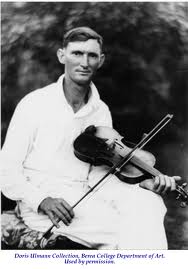Annotation:Indian Squaw (2)
X:1 T:Indian Squaw [2] T:Two Little Indians and One Old Squaw N:From the playing of Knott County, east Kentucky, fiddler Hiram Stamper (1893-1991), N:recorded in the field in 1986 by Bob Butler M:C| L:1/8 N:Play with some 'swing' R:Reel D:https://www.slippery-hill.com/content/two-little-indians-and-one-old-squaw Z:Transcribed by Andrew Kuntz K:G B2-d2 d2d2|d2 d=f- e2d2|[G,3G3]A B2d2|d2de d2B2|A2G2 (D2 EF)| D8|B2dd dd d2-|d2 fd e2d2|B2-Bd (3BdB AA| G2 AB A2G2E3c| BGAG GB3|A2G2E2c2|(3BcB AG GGBG- |D2E2 {E}[G,3G3]B| BGAG EE [GB]A|G2 AG EE ([Ec]A)|(3BcB AG GGBG- |D2E2 (G,G3)|[M:2/4] G4||
INDIAN SQUAW [2]. AKA - "Two Little Indians and One Old Squaw." AKA and see "Banks of the Arkansas." American, Reel (cut time). G Major. GDad tuning (fiddle). AB. Some similarities to Alva Greene's version (see "Indian Squaw (1)"). Hiram Stamper's [1] (1883-1992) archaic version apparently was derived from a song. Stamper whistled to the 'B' part of the tune, and sang to the 'A' part:
Way down yonder on the Arkansas,
Two old Indians and one old squaw,
Sitting on the banks of the Arkansas.
Jeff Titon (2001) finds nearly the same lyric in a song called "Bank of the Arkansas (The)" printed in Lomax and Lomax's Our Singing Country (1941, pp. 68-69), although Titon says tune that appears with that song is the same as that of Clyde Davenport's "Cornstalk Fiddle and a Shoestring Bow."


